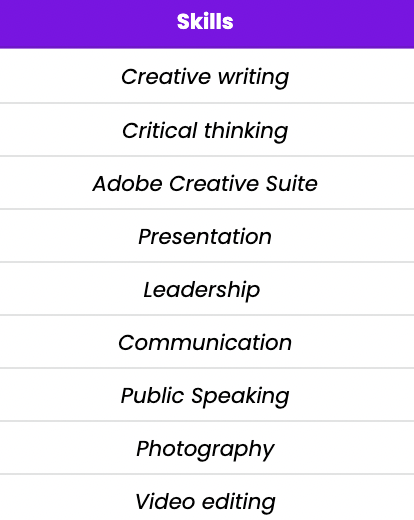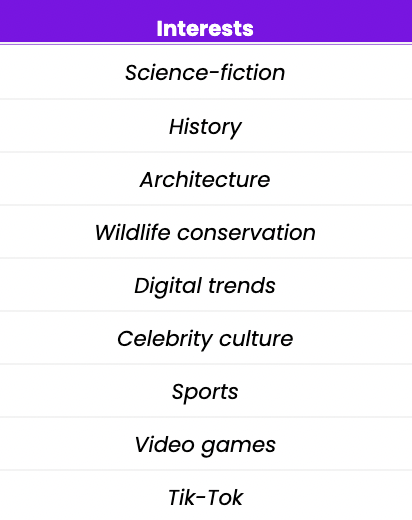
High school marks the end of your childhood and the beginning of your transition into adulthood. It’s hectic and confusing, but trust us, this is the perfect time to prepare for what’s ahead: the ruthlessly competitive job market.
You can use this time to improve your employability so you’ll have a lot more career options in the future. But how do you do that? Simple. High school internships.

Getting a high school internship
High school internships provide a brilliant opportunity for growth. It’s a great chance to experience the professional world minus the commitment.
- Test out if you really want to enter the field you’re most passionate about
- Address your skill gaps well before college
- Make some extra money (if you get a paid internship)
- Boost your college acceptance chances
- Strengthen your resume for future employment
How to get started
Before you land the perfect high school internship, there are a few essential steps you absolutely need to follow:
- Identify and list your interests and skills
- Create a resume
- Reach out to your personal network
- Google is your friend!
- Craft an effective email
- Set up a LinkedIn
Step #1: Identify and list your interests and skills
Before you embark on your internship hunt, you’ll want to identify your interests and skills. For example, if you’re not tech savvy (or aren’t into technology in general), then an internship in a tech company wouldn’t benefit you much.
Here’s how to do this:
1. Take a few minutes to list out your interests. The point of this exercise is to get to know yourself.
Think about the activities you enjoy doing and hobbies you partake in (e.g. touring museums, travelling, knitting, writing fanfiction, etc.) and write those down.
You should also list out topics and subjects that intrigue you (e.g. science, history, food, sports, comics, etc.).
2. Next, you’ll want to list out your skills. Skills come in two major forms: hard and soft. Hard skills are more quantitative. They are job-specific, technical skills (like programming, for example).
Soft skills are more qualitative. Your personality and the way you approach people are all part of your soft skill set. Are you an empath? Great! There’s a soft skill right there.
You can even ask your school counselors for help with securing an internship. Taking an aptitude test is a great way to both understand your own strengths and limitations.
3. Now take your interests and skills and put them down on a simple table like this:


Now that you know what your interests and skills are, take some time to research and eliminate options you find to be not viable.
For example, you like stand-up comedy and want to be a comedian but “cracking jokes on the fly” and “taking heckling like a champ” don’t fall under your skill set. Eliminate that option.
You can take note of any overlaps and see if it’s useable:

Now that you have a solid list of interests and skills, start listing out industries you could potentially enter (and more importantly, LEARN SOMETHING from).
Step #2: Create a resume
Having a solid resume is one of the best ways to guarantee an interview for a job role/internship, so building the perfect resume for an internship is vital!
Resumes (also known as CVs), need to be constructed carefully.
- Basic template: Many companies use an applicant tracking system (ATS), you’ll be in trouble if your resume is unreadable to the technology. Avoid fancy graphics and use a simple template.
- Simple and straightforward details: Start with your name, address and contact details at the top, and briefly introduce yourself in a couple of lines. Don’t write endless paragraphs.
- Skills, experience, and achievements: Avoid ranting and present them in a simple, easy-to-read format. Start with the most relevant skills and experience before listing the less-relevant ones.
Don’t be shy about listing some of your most prized achievements thus far either (your GPA, sports accomplishments, science fair wins, etc.). - Courses, workshops, and volunteer work: Did you go to a seminar on leadership once or to computer camp? Did you volunteer during your summers? List them!
- Solid references: References are a great way for potential employers to get to know you from a third party, and chances are, if they shortlist you, they’ll be ringing up those you’ve listed.
- Customize: Don’t mass-send the same resume to every company you’re applying to! Edit and amend as required so that each version of your resume is substantially different to the other.
Check the relevance of the skills and experience. Amend your introduction to fit what each company is looking for.
For example, “I’m a writer with a special interest in medicine” would be fitting for the role of report writer for a medical publication, for example, but it would make no sense for a catalogue specialist at an e-marketing platform.
If this is your first time writing a resume, we recommend checking out resume.io for some great templates.
Step #3: Reach out to your personal network
The easiest way for you to become a high school intern is to ask your personal network for opportunities. Every now and then, a little nepotism is okay (as a treat).
Ask your family, friends and acquaintances to keep an eye out for any openings around. You’d be surprised at the opportunities that crop up. (In all honesty, the chances of getting a paid internship via family and friends are often slim.)
Does your uncle own a company? Ask if you can file some papers or fill in some data at the office for a couple of weeks in the summer.
(An internship doesn’t have to be an extended affair. High school summer internships are actually just as valuable!)
This is also another area where your school counselor could help. Explain your goal for your internship and ask if there is anyone within the community that a counselor can put you in touch with, for example.
Use this template to help you organize everything:

Step #4: Google is your friend!
If your personal network didn’t yield the best results, Google is your friend.
With Google, you’ll be able to source internship opportunities according to the field of interest, company size, location, etc.
1. Make a list of potential companies you’d like to work at. Ideally, you’ll want to identify startups that are doing particularly well.
Startups tend to be smaller companies with more internship opportunities than well-established, large companies.
This also means you’ll have a better learning experience and more time to develop your skills during your internship.
2. Do some research into the companies and understand what they do and why they do it. This way, you can eliminate companies that don’t particularly suit your values, goals and interests.
Whether they have an open call for interns or not doesn’t matter. You can still request an internship, as long as you do so in the proper manner.
Step #5: Craft an effective email
Cover letters are a little hit-or-miss these days. Some companies still ask you for a cover letter, while many don’t.
Either way, the most helpful thing you can do to catch a recruiter’s attention is to effectively and concisely get the message across to them that you are the perfect candidate for this internship.
Some things to keep in mind when crafting this email include:
- Use an eye-catching subject line
- Keep your self-introduction and purpose for the email brief and to the point
- Link back to the company itself and show them you’ve done your research (for example, you can quote some impressive statistics about them, mention a recent campaign they executed and what you liked about it, or some of the company’s recent milestones and why this made you want to intern there).
Here are a couple of sample templates that’ll help you get started.
1. If a company has put out a call for interns, you can use this as a guide:

2. If you’re cold-emailing for an internship, the template would have to be a little different:

Step #6: Set up a LinkedIn
You can leverage LinkedIn to ease your internship hunt! With over 800 million users worldwide, LinkedIn is a great place to track down local, global or remote internships across almost any field you could imagine!
This is exactly why spending some time, effort and thought into setting up a LinkedIn profile will benefit you greatly.
Upon creating your LinkedIn profile, make sure that you:
- Have a suitable profile picture. This will help your profile grab attention. Depending on the field you’re aiming for, your profile picture can help reflect your commitment to the role.
- Write a headline that highlights who you are and what you do in a concise manner. You can briefly speak on your expertise and goals here, too.
- Add a summary. This is where you expand on what you’ve spoken about in your headline. Use this opportunity to boast a little about yourself. After all, you ARE selling yourself to potential recruiters.
- Keep it up-to-date. Every time you have a new achievement, qualification, skill, experience, etc., UPDATE your LinkedIn without fail!
Also, keep in mind that being proactive about approaching recruiters rather than waiting for them to stumble upon you and reach out is completely OK! In fact, it’s encouraged.
1. Here’s a template you can use when you want to connect with a recruiter on LinkedIn:

2. After connecting with the individual, you can send a follow-up message like this:

3. If there is no response, you don’t want to harass them but one final message just to follow up would be ideal:

Final thoughts
We believe in continuous improvement and that ‘every skill learned is one worth keeping’!
You’re still in high school, which is the perfect time to try out new things and test the waters.
So, even if you do end up choosing an internship you’re not very interested in for the singular sake of improving your chances at college admissions or bolstering your resume, that’s a strong choice you’re taking towards building your career and improving yourself!
If you get a callback for an internship you’ve been eyeing, the next step would be the interviews! If you’d like to learn more about how you can absolutely ACE your interview and get that job, check out our blog on the STAR Method!
Check out our website for more resources to help you take your career to new heights (or to the world)!



